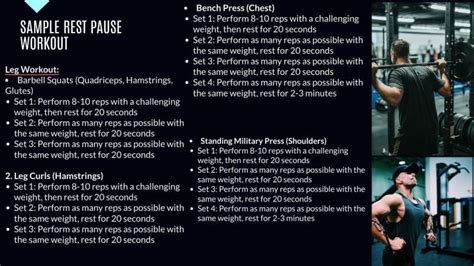Break strength plateaus? What advanced training methods unlock peak performance?

Conquering the Infamous Strength Plateau
Every dedicated lifter eventually faces it: the dreaded strength plateau. That point where your lifts stubbornly refuse to budge, despite your best efforts. It’s a frustrating wall that can derail motivation and progress. But what if the solution isn’t just “try harder,” but “train smarter”? Advanced training methods are precisely the tools designed to shatter these barriers and propel you towards peak performance.

Why Do Plateaus Happen?
Plateaus are a natural consequence of the body’s incredible ability to adapt. When you consistently perform the same exercises with the same intensity and volume, your body becomes efficient at handling that stress. The initial gains slow down and eventually stop because there’s no longer a novel stimulus to force further adaptation. To break through, you need to introduce new, strategically applied stressors that challenge your system in fresh ways.
Advanced Methods to Ignite New Growth
1. Periodization: The Master Plan
Instead of haphazardly varying your workouts, periodization involves strategically planning your training over defined cycles (macro, meso, micro). This allows for systematic variation in volume, intensity, and exercise selection to optimize adaptation and prevent overtraining. Common forms include:
- Linear Periodization: Gradually increasing intensity while decreasing volume over time (e.g., starting with high reps/low weight, moving to low reps/high weight).
- Undulating Periodization (Daily/Weekly): Varying intensity and volume more frequently, even within the same week, to provide diverse stimuli and maintain freshness.
2. Intensity Techniques: Pushing Beyond Failure
These methods are designed to increase the amount of work done with a given weight or to push muscles past their typical point of failure, recruiting more muscle fibers.
- Dropsets: After reaching muscular failure with a certain weight, immediately reduce the weight and continue for more repetitions until failure again. Repeat for 2-3 drops.
- Rest-Pause Training: Perform a set to near failure, rack the weight, take a very short rest (10-20 seconds), then perform a few more reps. Repeat for 2-3 mini-sets within one “set.”
- Supersets/Giant Sets: Performing two or more exercises back-to-back with minimal rest. Can be for opposing muscle groups (e.g., biceps/triceps) or the same muscle group (e.g., bench press then dumbbell press).
- Forced Reps: With the help of a spotter, continue lifting a weight beyond your point of failure for 1-2 extra repetitions. Use sparingly and carefully.
- Negative Reps (Eccentrics): Focusing solely on the lowering (eccentric) phase of an exercise, often with a heavier weight than you can lift concentrically. Have a spotter assist with the concentric lift.

3. Accommodating Resistance: Bands and Chains
Adding resistance bands or chains to exercises like squats, deadlifts, and bench presses can be a game-changer. These tools make the lift harder at the top (where you’re strongest) and easier at the bottom (where you’re weakest), matching the strength curve of your muscles. This forces you to generate more power throughout the entire range of motion and helps overcome sticking points.
4. Cluster Sets: Strategic Micro-Breaks
Unlike traditional sets where you perform all reps consecutively, cluster sets involve short, pre-determined rest periods (e.g., 10-30 seconds) between small groups of repetitions within a single set. For example, instead of 1×8, you might do 4×2 with short rests in between. This allows you to lift heavier weights or perform more reps with a given weight at a higher quality, accumulating more high-intensity work.

The Undeniable Power of Recovery and Deloads
Advanced training methods place significant stress on your body. To truly unlock peak performance, recovery is paramount. Incorporating planned deload weeks – periods of reduced volume and/or intensity – allows your body to fully repair, adapt, and supercompensate, preventing burnout and overuse injuries. Prioritize sleep, nutrition, and stress management as non-negotiable components of your advanced training strategy.

Integrating Advanced Strategies for Breakthroughs
These methods are powerful tools, but they should be used judiciously. Not all at once, and not all the time. Pick one or two methods that align with your current goals and integrate them into your existing program for a specific cycle (e.g., 4-6 weeks). Pay close attention to your body’s response, track your progress meticulously, and be prepared to adjust. The key is progressive overload – consistently challenging your body in new ways – and these advanced techniques provide a vast arsenal to do just that.

Beyond the Plateau: A Path to Peak Performance
Breaking through a strength plateau isn’t just about lifting heavier; it’s about understanding your body, optimizing your training, and embracing intelligent programming. By strategically employing advanced training methods like periodization, intensity techniques, accommodating resistance, and cluster sets, alongside prioritizing recovery, you can transform your training, overcome your sticking points, and ascend to new levels of strength and athletic prowess. The path to peak performance lies in continuous, intelligent evolution of your training approach.








